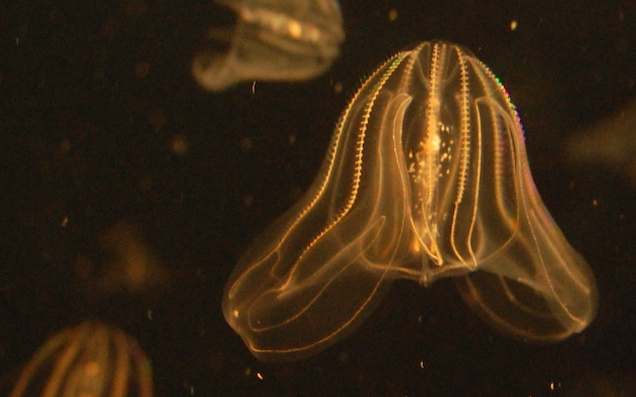
There are not a lot of ways in which jellyfish are more advanced than human beings. For instance: we have legs, opposable thumbs, the ability to survive outside of water, and a capacity for abstract thought that has allowed us to establish ourselves as the dominant lifeform on Earth. In contrast, jellyfish are limp blobs of jelly that deteriorate to nothing if they get washed up on the shore. There are the ways in which the jellies are superior to us, though. For instance, the immortal jellyfish (Turritopsis dohrnii), as its name suggests, is biologically immortal. If no predators decide to fuck with it and it doesn’t pass through the propeller of an oil tanker, the immortal jellyfish will live forever. Similarly superior is the warty comb jelly (Mnemiopsis leidyi, technically a comb jelly, not a jellyfish), which can spontaneously generate a butthole at will and dispense with it when it is done pooping. Amazing.
[jwplayer EeC5ZVky]
Published last month in the journal Invertebrate Biology, the paper Defecation by the ctenophore Mnemiopsis leidyi occurs with an ultradian rhythm through a single transient anal pore outlines the discovery of the very special butthole on the warty comb jelly.
Microscopic study of the animal found that when the comb jelly poops (which it does at regular intervals between 10 minutes and an hour long, depending on its age), its stomach stretches out to make contact with its outer skin, where an ‘anal pore’ will suddenly appear.
They discovered this by collecting a whole bunch of the comb jellies from the seawater off Woods Hole, Massachusetts, and setting up a camera to film them pooping, with the footage recorded via VCR to a VHS tape (they specified this in the paper).
The paper concludes that this teleporting butthole could provide an insight into how higher order animals developed the anal system that we now have:
This “now-you-see-it-now-you-don’t” performance by the anal pore in Mnemiopsis is puzzling. Does the pore really disappear completely, i.e., by disassembly and/or breakdown of its components? Or is the closed pore in its final constricted state simply too small to see by the DIC video imaging system used here? The former possibility represents a novel ephemeral pore that rhythmically is lost and regenerates at every defecation. If so, defecation periodicity and duration indicates that Mnemiopsis would spend ~90% of its life without an anal structure or through-gut, and thus have an intermittent anus and intermittent through-gut. Such temporality of the anus might provide clues for understanding evolution of a permanent anus and through-gut in animals.
Lead researcher Sidney Tamm told New Scientist that there is no other animal in nature documented to have a transient anus, and that this type of butthole might well be the very start of the chain of evolution that led to the anus.
Nature is so amazing.



